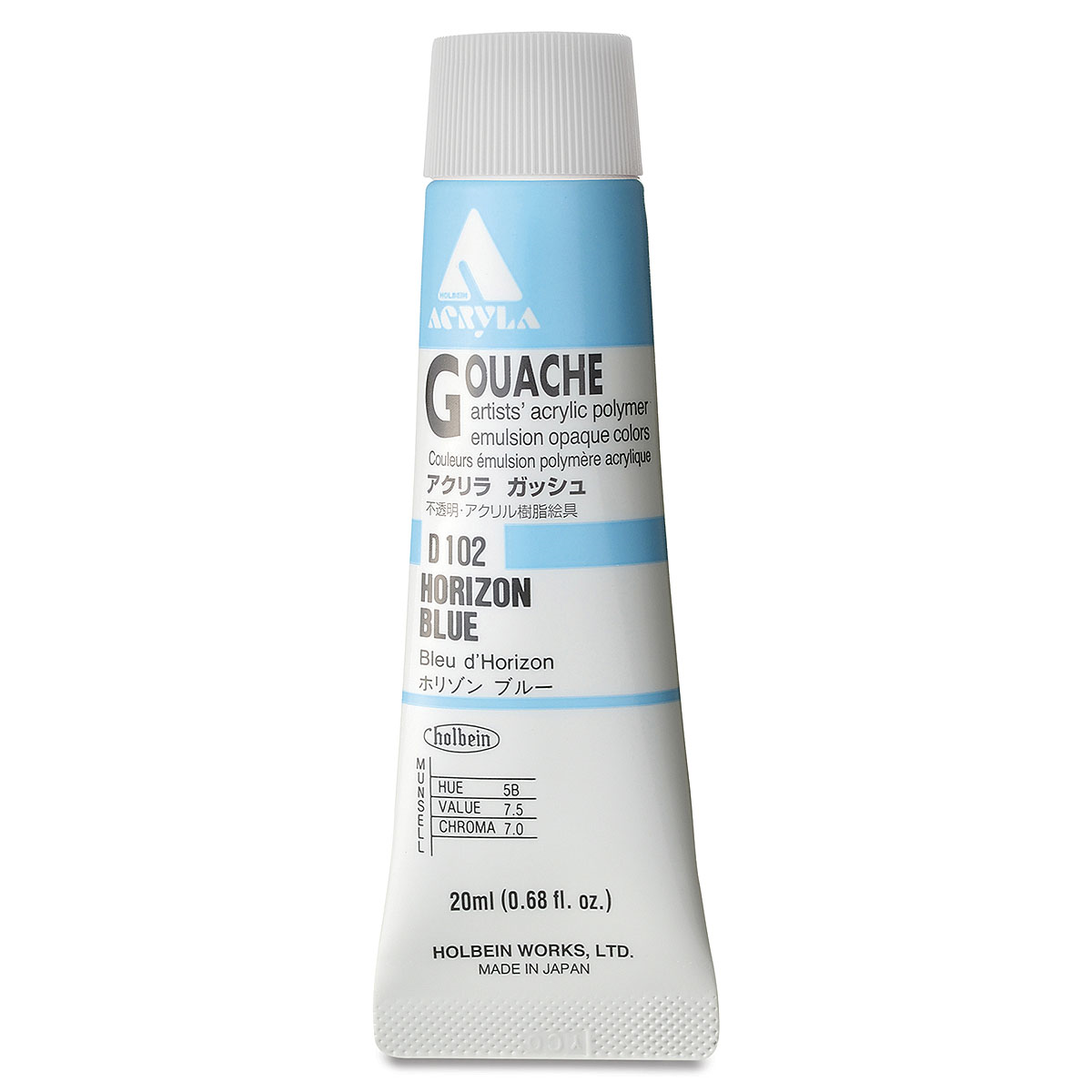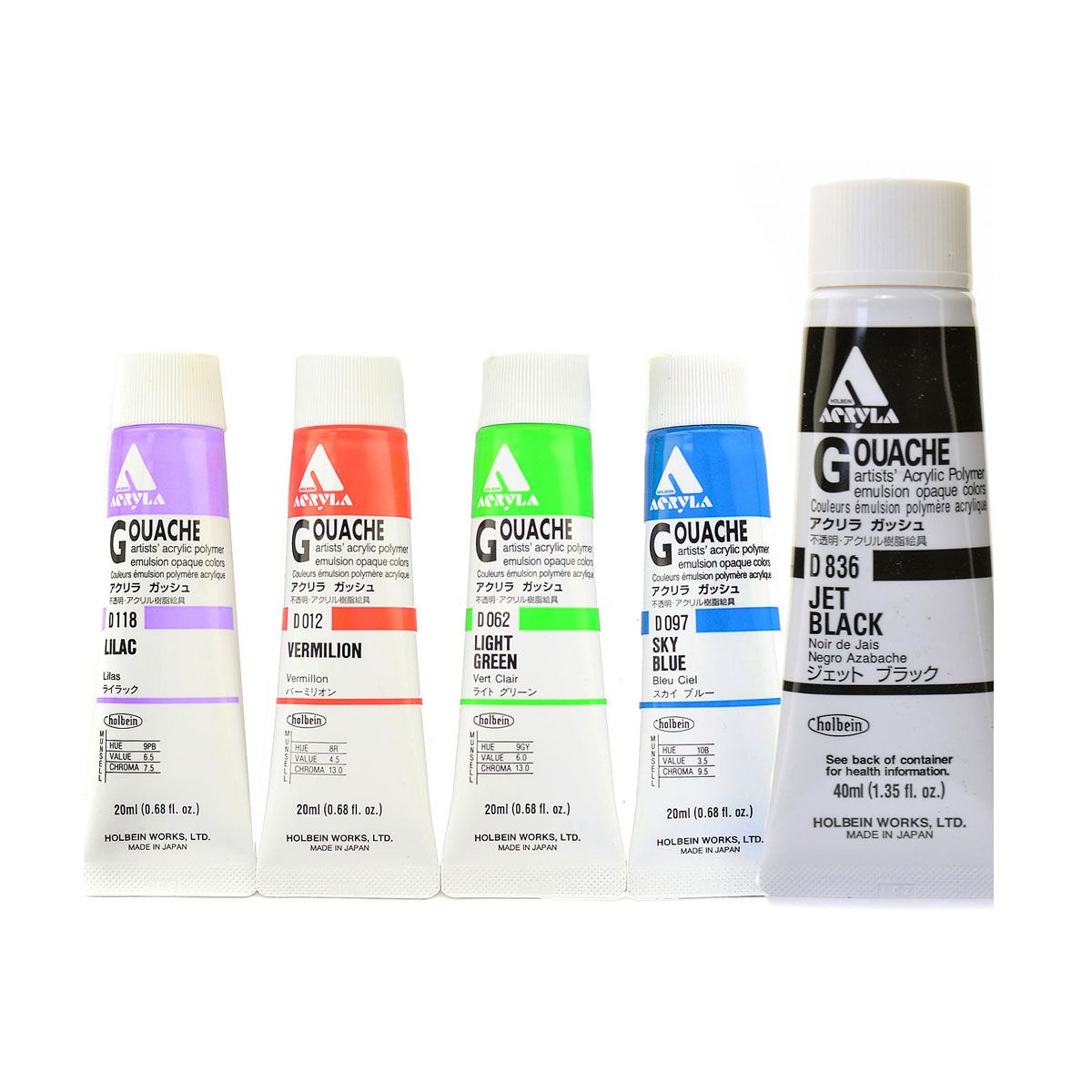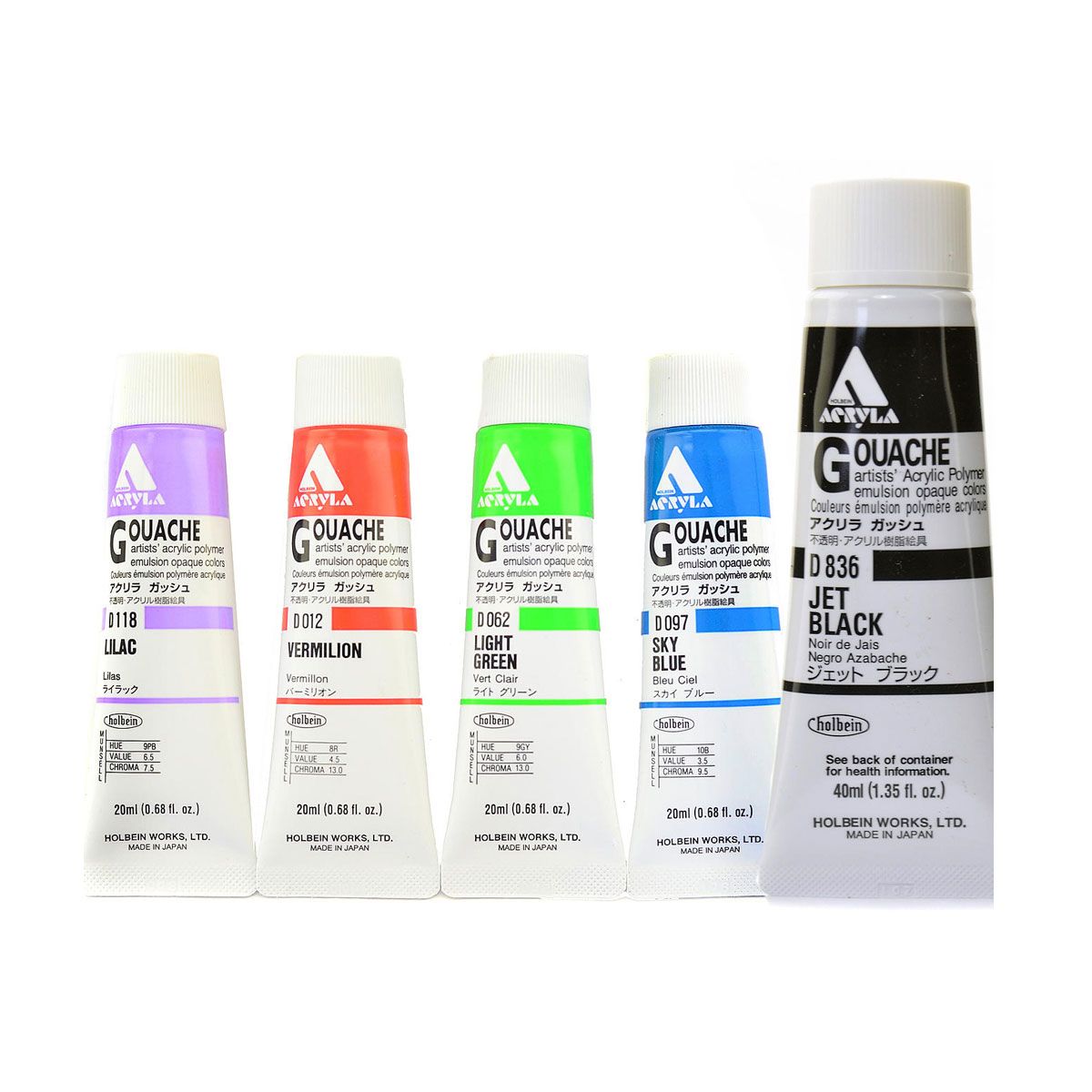Holbein Acryla Gouache Misty Blue 20 ml
D101 Misty Blue/Bleu de Brume - Ultramarine [Blue] PB29, PBk11 Mars Black, Titanium White PW6
The imitated Ultramarine process was invented in France in 1826 by Jean Baptiste Guimet, making blue affordable to artists and extending the range of colours on their palettes. Titanium dioxide Universal use of the pigment began in the 1940s and became the most commonly used white pigment.
Series: A
Lightfast: ***
D101 Misty Blue/Bleu de Brume - Ultramarine [Blue] PB29 (inorganic, complex silicate of sodium and aluminum with sulphur), PBk11 Mars Black (Earth, Iron oxides), Titanium White PW6 (inorganic, Titanium dioxide).
Series: A
Lightfast: ***
Pigment 1: Ultramarine [Blue] PB29
The name for this pigment comes from the Middle Latin ultra, meaning beyond, and mare, meaning sea because it was imported from Asia to Europe by sea. It is a prominent component of lapis lazuli and was used on Asian temples starting in the 6th century. It was one of the most expensive pigments in 16th century Europe, worth twice its weight in gold, and so was used sparingly and when commissions were larger. The imitated Ultramarine process was invented in France in 1826 by Jean Baptiste Guimet, making blue affordable to artists and extending the range of colours on their palettes.
Pigment name: PB29-Ultramarine [Blue]
Pigment Type: Inorganic
Chemical Name: Complex silicate of sodium and aluminum with sulphur
Properties: Ultramarine is the standard warm blue, a brilliant blue pigment with the most purple and least green in its undertone. It has a moderate to high tinting strength and beautiful transparency. Synthetic Ultramarine is not as vivid a blue as natural Ultramarine. Ultramarine dries slowly in oil and tends to produce clean, though granular, washes in watercolour. French Ultramarine mixes well with Alizarin colours in oil and watercolour to create a range of purples and violets. It can dull when mixed with white in acrylic form but mixes well with other colours. The shade varies based on the manufacturer. Considered a great colour for glazes, it is not suitable for frescoing.
Permanence: Ultramarine has excellent permanence, although synthetic Ultramarine is not as permanent as natural Ultramarine. It may discolour if exposed to acid because of its sulfuric content.
Toxicity: Ultramarine has no significant hazards.
Alternate Names: Artificial Ultramarine, French Blue, French Ultramarine, Gmelin's Blue, Guimet's Blue, Permanent Blue, Royal Blue, Synthetic Ultramarine. New Blue describes particular shades of Ultramarine. Armenian Blue and Lazuline Blue are names for genuine Lapiz Ultramarine. Sky Blue is a pale tone of Ultramarine.
Pigment 2: PBk11 Mars Black
The word Mars refers to the Roman god of iron and war. Mars Black was developed in the early 20th century from inorganic, synthetic iron oxide.
Pigment name: PBk11 Mars Black
Pigment Type: Earth
Chemical Name: Iron oxides
Properties: Mars Black is an opaque black with a strong and cool masstone, a slightly warm tint, and a warm brown undertone. It is not as black as Ivory Black, but it dries more quickly and has three times the tinting strength. Mars Black is usually the only black available in an acrylic form, and that is safe to over-paint. It can be used in all media without reservation and is widely used as an alternative to Lamp Black and Ivory Black.
Permanence: Mars Black is very lightfast with excellent permanence.
Toxicity: Mars Black has no significant hazards and is the only primary black pigment considered non-toxic.
Alternate Names: Black Iron Oxide, Iron Black, Magnetic Oxide, Mapico Black, Mineral Black. Sometimes labelled as Vine Black.
Pigment 3: Titanium White PW6
Titanium is the ninth most abundant element in the Earth's crust; however, mineral deposits that are economical to mine are less common. Titanium dioxide was first discovered in 1821, although it could not be mass-produced until 1919. Widespread use of the pigment began in the 1940s. Since that time, it has become the most commonly used white pigment. The name comes from the Latin word Titan, the name for the elder brother of Kronos and ancestor of the Titans, and the Greek word tito, meaning day or sun.
Pigment Name: Titanium White PW6
Pigment Type: inorganic
Chemical Name: Titanium dioxide
Properties: Titanium White is the most brilliant of the white pigments. It is considered an all-purpose oil colour useful in all techniques and the best all-around white. Its masstone is neither warm nor cool, placing it somewhere between Lead White and Zinc White. It is less prone to cracking and yellowing than Lead White, but it still yellows easily. Titanium White dries slowly in oil form, more slowly than Lead White but more quickly than Zinc White. It is opaque in oil and acrylic forms and semi-opaque in watercolour. This pigment has good chemical stability, and its tinting strength is superior to both Lead White and Zinc White.
Permanence: Titanium White has excellent permanence and lightfastness.
Toxicity: Titanium dioxide is highly stable and is regarded as completely non-toxic. Animal studies do not indicate that it is absorbed biologically, even after long periods of exposure. The primary safety concern is with inhalation of fine pigment dust particles. If inhaled in large amounts over the course of several years, Titanium White may cause a benign pneumoconiosis that is visible on x-rays. The National Institute of Occupational Safety and Health (NIOSH) considers fine titanium dioxide particles, if inhaled, to be a human carcinogen. The primary concern for artists is to avoid exposure to fine particulate dust from raw pigments.
Alternate Names: None.
| Size | 20 ml |
|---|---|
| Brand | Holbein |
| Country of Manufacture | Japan |
| Type of Store Credit value | Select |
















